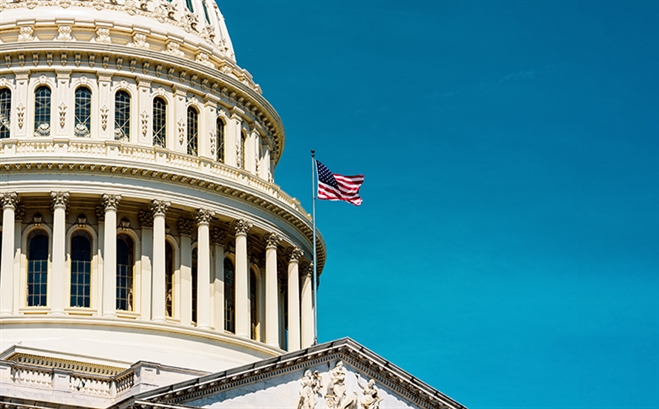American Rescue Plan: The Numbers
March 22, 2021 by Brian Aylward

Each year, March serves as a critical time for the National League of Cities (NLC) to convene for its Congressional City Conference, and the National Association of Counties (NACo) for its Legislative Conference. Even in a virtual environment, these key events bring together thousands of local and federal government leaders to discuss policy and oversight.
March also marks one year since COVID-19 caused closures across the globe. And most importantly, in the midst of these two industry events, the American Rescue Plan Act of 2021 was signed into law. This bill served as the catalyst for ongoing conversation and shared victory for state and local governments across the country.
The $1.9 trillion American Rescue Plan (ARP) specifically calls out $350 billion in dedicated funding to states, localities, territories, and tribal governments. Local government funds are calculated using a modified Community Development Block Grant (CDBG) formula or are based on population. All ARP funds expire on December 31, 2024, where 50% of funds will be allocated in the 60 days following the bill coming into law and the other 50% will be allocated 12 months after initial payment.
Here’s what we know by the numbers:
States
A total of $219.8 billion is dedicated to the state fiscal recovery fund. This includes $195.3 billion allocated to all 50 states and the District of Columbia (D.C.) where $25.5 billion will be divided equally among the 50 states and D.C., and $169.8 billion will be allocated to each state based on their share of national unemployment rate between October-December 2020. Tribal governments will receive $20 billion and U.S. territories will receive $4.5 billion. There’s also $50 million reserved for U.S. Treasury administration of funds. Read more on allowable uses and limitations from the National Association of State Auditors, Comptrollers, and Treasurers ARP Analysis.
Counties
$65.1 billion in direct, flexible funding is available to every county, parish, and borough in the United States. These funds will be made available directly by the U.S. Treasury Department and can be used to invest in small businesses, vaccine distribution, public health, human services, and more. County-level estimates are available through the National Association of Counties (NACo) Clearinghouse. Additional ARP analysis can also be accessed via NACo.
Metropolitan Cities
$45.57 billion in direct, flexible funding is available to cities with a population of 50,000. These funds will be made available directly by the U.S. Treasury Department and can be used to respond to the pandemic or replace lost revenue. Metropolitan city estimated allocations are available via spreadsheet through the National League of Cities (NLC) Stabilizing Local Government Operations Hub. NLC is also hosting weekly 30-minute webinars through April 23 to discuss how the Biden Administration will be delivering relief and key things you should know.
Non-Entitlement Municipalities
$19.53 billion in funding will be administered to cities, towns, and villages with populations fewer than 50,000. These funds will be directed to each state for further redistribution based on a per-capita formula established by the U.S. Treasury within 30 days. A cap on grant amount has also been established that requires small municipalities to not receive a grant that is equal to or higher than 75% of their pre-pandemic budget. More information can be found at the National League of Cities and updates can be heard during NLC’s weekly Friday webinars.
The American Rescue Plan marks a historic moment for the U.S. in our efforts to respond to and recover from COVID-19. Tyler applauds the federal advocacy efforts of the National League of Cities, National Association of Counties, and countless other industry associations for raising the collective voices of localities and helping direct relief funding to governments of all sizes. These funds help state and local governments stay agile, respond effectively, and plan for a resilient and safe recovery.
Tyler urges government to look at strategic technology investments to ensure the required digital infrastructure is in place to provide stability of citizen-facing and backend services that make an impact now and that last beyond the pandemic. These funds, just like CARES Act dollars, can further improve government’s ability to maintain successful continuity of operations while also supporting future success.